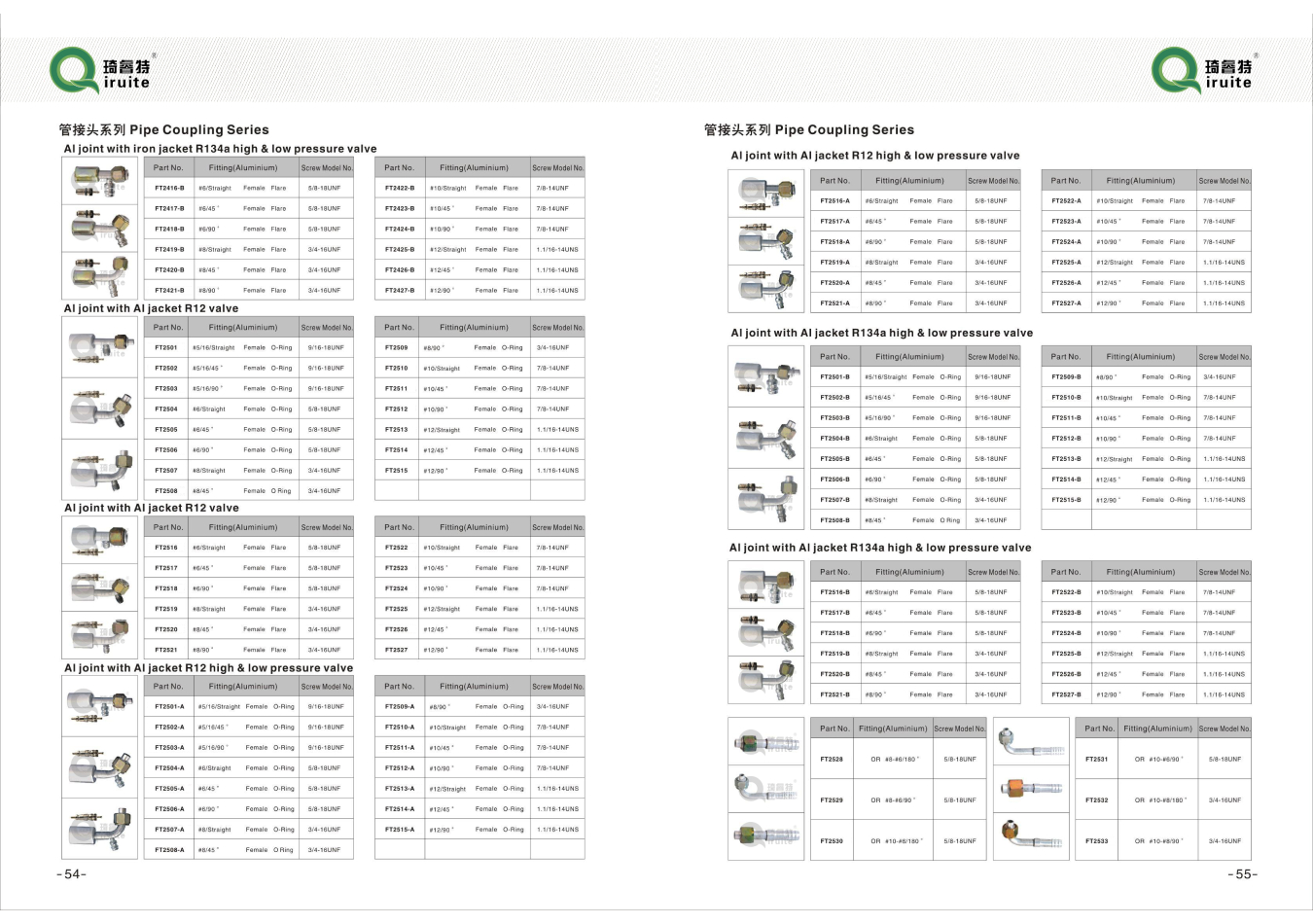Common Causes and Solutions for Power Steering Hose Leaks in Vehicles
Understanding Power Steering Hose Leaks Causes, Symptoms, and Solutions
Power steering is an essential component of modern vehicles, providing drivers with the ability to steer their cars with ease. Among the critical parts of the power steering system is the power steering hose, which transports hydraulic fluid from the pump to the steering gear. However, like any other component, power steering hoses can develop leaks, causing significant issues for vehicle operation. This article will explore the causes of power steering hose leaks, their symptoms, and the solutions to address this problem.
Causes of Power Steering Hose Leaks
Power steering hose leaks can arise from various factors, many of which relate to age, wear, and environmental conditions. Here are some of the primary causes
1. Wear and Tear Over time, hoses can degrade due to heat, pressure, and age. Rubber hoses can become brittle and crack, while metal components may corrode, leading to leaks.
2. Improper Installation If a power steering hose is not installed correctly, it may be subjected to undue stress. The wrong torque settings or incorrect routing can cause the hose to rub against other parts of the vehicle, leading to wear and potential leaks.
3. Fluid Contamination Contaminants in the power steering fluid, such as dirt and debris, can cause internal damage to the hose. This contamination can block the flow of fluid and create pressure points, which might eventually lead to leaks.
4. Temperature Fluctuations Extreme temperatures can affect the integrity of power steering hoses. In hot weather, hoses may expand, while cold temperatures can cause them to contract. These constant changes can eventually lead to cracks and leaks.
5. Hydraulic Pressure Changes Sudden increases in hydraulic pressure due to a malfunction in the power steering pump can cause hoses to burst or develop leaks.
Symptoms of Power Steering Hose Leaks
Recognizing the symptoms of a power steering hose leak is crucial for timely intervention
. Here are some common signs that you may have a leak1. Steering Difficulty If you notice that your steering wheel feels more difficult to turn, this could indicate a loss of hydraulic fluid pressure due to a leak.
2. Fluid Puddles One of the most apparent signs of a power steering hose leak is the presence of reddish or yellowish fluid puddles under your vehicle. This fluid is typically the power steering fluid leaking from the hose.
power steering hose leak

3. Loud Noises If you hear whining, squealing, or grinding noises when turning the steering wheel, it might be an indication of low fluid levels due to a leak.
4. Unusual Smells Overheating can occur if the power steering system is low on fluid, possibly resulting in a burning smell, which signifies that there may be a leak.
5. Warning Lights Some vehicles have warning lights that will illuminate to alert the driver that the power steering fluid levels are low. This may be due to a leak in the hose.
Solutions to Power Steering Hose Leaks
Once you've identified that you have a power steering hose leak, taking prompt action is essential to prevent further damage to your vehicle. Here are some solutions to consider
1. Inspection Begin with a thorough inspection of the power steering system, focusing on the hoses, connections, and pump. Identifying the exact location of the leak will help determine the necessary repairs.
2. Hose Replacement If the hose is found to be cracked or damaged, replacing it is the most effective solution. Ensure that the replacement hose is of high quality and suitable for your specific vehicle model.
3. Fluid Replacement After addressing the hose issue, it's essential to refill the power steering fluid to the recommended levels. Using the correct type of fluid will help maintain optimal performance.
4. Professional Assistance If you're not comfortable inspecting or replacing power steering hoses yourself, seeking the help of a professional mechanic is advisable. They can provide expert diagnostics and ensure that the repair is done correctly.
5. Regular Maintenance Finally, regular vehicle maintenance can prevent future leaks. Checking the power steering fluid levels, inspecting hoses for signs of wear, and addressing any small issues early can extend the life of your power steering system.
Conclusion
Power steering hose leaks can lead to significant steering issues and potential vehicle damage if left unaddressed. Being aware of the causes, symptoms, and solutions can help you maintain a safe and functioning power steering system. By addressing leaks promptly and conducting regular maintenance, you can ensure that your vehicle remains easy to steer and performs optimally on the road.
-
Ultimate Spiral Protection for Hoses & CablesNewsJun.26,2025
-
The Ultimate Quick-Connect Solutions for Every NeedNewsJun.26,2025
-
SAE J1401 Brake Hose: Reliable Choice for Safe BrakingNewsJun.26,2025
-
Reliable J2064 A/C Hoses for Real-World Cooling NeedsNewsJun.26,2025
-
Heavy-Duty Sewer Jetting Hoses Built to LastNewsJun.26,2025
-
Fix Power Steering Tube Leaks Fast – Durable & Affordable SolutionNewsJun.26,2025

